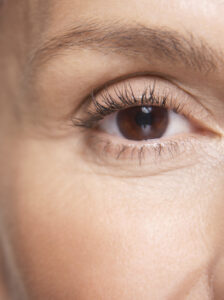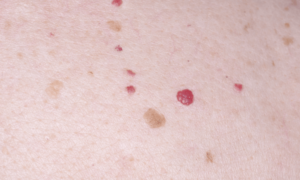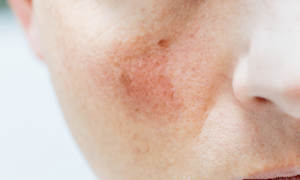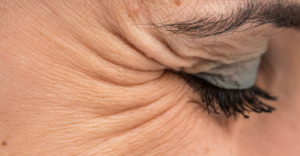*Eden Medical Doesn't Offer this Treatment. This is an Educational Article*
Migraines are more than just headaches. They can turn a regular day into a real struggle for many people in Ireland.
But did you know that Botox, often used to smooth out wrinkles, can also be a helper in the fight against migraines? Let’s discuss how this works and what you might want to know if you’re dealing with migraines yourself.
Migraines aren’t just bad headaches. They can also make you feel sick to your stomach, sensitive to light, and even make it hard to see properly.
For people who have migraines often, finding a way to manage them is really important. That’s where Botox might come in.
How Does Botox Help with Migraines?
Breaking it Down
Botox has a special ability to block messages that tell our brain we’re feeling pain. So, when it comes to migraines, a little bit of Botox in the right spots might mean fewer headaches and less severe pain. It’s like a roadblock that stops the pain messages before they reach the brain.
Doctors who use Botox for migraines will put small amounts in different areas like the forehead, neck, and shoulders. These are often spots that can be linked to migraine pain. The idea is to put the Botox where it can best block those pain messages and hopefully give you some relief.
Studies indicate that Botox lessens migraine symptoms by blocking the release of nociceptive neurotransmitters involved in pain processing. By interrupting these pain pathways, Botox provides relief from the persistent pain characteristic of migraines.
Botox and Migraine Treatment in Ireland
The Official Say-So
Migraine Ireland gives the thumbs up for using Botox to treat chronic migraines. That means migraines that happen a lot – 15 or more days per month.
They outline studies conducted in which patients who were treated with Botox for Migraines reported big improvements in their quality of life and fewer headaches compared to those on placebo.
Going for a Botox Migraine Treatment
What’s it Like?
Getting Botox for migraines involves visiting a doctor who knows a lot about it. They’ll use a tiny needle to put small amounts of Botox into specific areas. Even though it involves needles, most people say it doesn’t hurt much more than a pinprick.
The whole thing is usually pretty quick and you can go about your day afterward. But, it’s super important that the doctor puts the Botox in the right spots to help block the pain messages that cause migraines.
Treatment Process
Before Treatment: A comprehensive assessment is conducted to ascertain if Botox is an appropriate treatment for the patient, which includes reviewing their medical history and migraine patterns.
During Treatment: The treatment consists of a series of Botox injections, administered by a healthcare professional with expertise in this area. The injections are strategically placed in areas commonly associated with migraine pain, such as the forehead, temples, neck, and shoulders.
After Treatment: Patients can typically resume their usual activities straight away following the procedure. The full benefits of Botox for migraines are generally realised within two to four weeks post-treatment.
Botox versus Other Migraine Treatments
Medications: Various medications are available for migraine management, but they may lead to side effects and may not be as effective for chronic sufferers. Botox presents an alternative for patients who have not found relief through conventional medication.
Lifestyle Changes: While beneficial, lifestyle modifications alone may not suffice for individuals with chronic migraines. Botox can complement these changes as part of a holistic treatment approach.
Alternative Therapies: Some patients find relief in treatments like acupuncture or chiropractic care. For those who do not achieve the desired relief from these methods, Botox is a viable, scientifically supported option.
Thinking About Trying Botox for Migraines?
What You Should Know
If you’re thinking about trying Botox for your migraines, it’s really important to have a chat with your doctor first. They can tell you all about what to expect, any possible side effects, and what kind of results you might see. Eden Medical currently don’t offer this treatment.
Everyone is a bit different, so while Botox helps some people a lot, it might only help others a little, or not at all. Knowing all the facts will help you decide if you want to give it a try.
Wrapping Things Up
Botox is becoming a useful tool in helping manage migraines for some people. It’s not just for wrinkles anymore! As we learn more about how it works, it could become a common way to help manage chronic migraines and give people more good days.

Eden Medical Clinic Doesn't Offer this Treatment
Botox for Migraines FAQs
Doctors usually give Botox treatments for migraines every 12 weeks, but they’ll let you know what’s best for you.
Some people might have a bit of pain where the Botox was put in, a headache, or feel a bit like they have the flu. Your doctor will let you know about all possible side effects.
No, only doctors who have had special training should give Botox treatments for migraines. Always check their qualifications first.
It might take a few weeks to notice a change after a Botox treatment. Some people might start to see a difference after a week, but for others, it might take a bit longer. Your doctor will help you understand what to expect.
No, we currently don’t give botox for migraines.




















